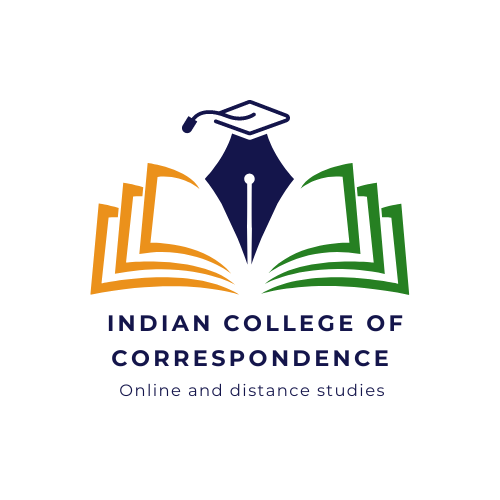Your online portfolio serves as your virtual resume in the modern digital world, showcasing your abilities, completed projects, and desired professional path. Developing an online portfolio will help you get a competitive edge when applying for internships, freelancing, or your first IT job if you’re studying a Distance BCA, B.Voc, or MCA.
But how do you build one while managing your distance studies?
This blog article explains step-by-step how to build a compelling online portfolio even while studying remotely. Whether you’re from a small town or metro city, this blueprint will help you create a strong digital presence and showcase your talents to the world.
📘 Why Do Students in Distance BCA, B.Voc, or MCA Need an Online Portfolio?
Online portfolios aren’t just for designers and writers anymore. In tech, having an online presence is essential.
Benefits of Having a Portfolio:
- Showcases your real-world skills, not just grades
- Increases your visibility to recruiters
- Acts as a proof of work for clients, freelance platforms, and companies
- Helps in building a personal brand
- Serves as a learning journal that you can improve over time
Even if you’re still studying, especially in a Distance BCA or MCA program, a portfolio shows initiative and discipline—exactly what employers are looking for.
🎯 Step 1: Choose What to Showcase Based on Your Degree
Let’s break it down based on your course:
👨💻 For Distance BCA (Bachelor of Computer Applications):
- Basic and intermediate programming projects (C, Java, Python)
- Web development (HTML, CSS, JavaScript, React)
- Database management (MySQL, MongoDB)
- Simple desktop applications
- GitHub repositories
🛠️ For B.Voc (Bachelor of Vocation):
- Skill-based projects in areas like IT, Software Development, or Web Design
- Certifications in vocational areas (Cybersecurity, Cloud Computing, UI/UX, etc.)
- Internship tasks and assignments
- Screenshots or documentation of hands-on tasks
🖥️ For Distance MCA (Master of Computer Applications):
- Full-stack web or app development projects
- Academic research or thesis documentation
- Real-world freelance projects (client work, bug fixes)
- Contributions to open-source platforms
- Teaching or mentoring sessions if any
✅ Tip: Even if your course is through distance learning, you can create your own projects to fill in the gap of classroom assignments.
🌐 Step 2: Pick a Platform to Host Your Portfolio
There are many free and paid platforms where you can host your online portfolio. Choose one that matches your technical comfort level and goals.
Popular Options:
| Platform | Features | Ideal For |
| GitHub Pages | Free hosting, integrates with GitHub | Tech-savvy students |
| WordPress | Easy to set up, customizable | Beginners |
| Notion | Flexible, simple, fast | Writers, coders, freelancers |
| Wix / Webflow | Drag-and-drop builder | Design-focused students |
| Not a portfolio, but great for visibility | Everyone |
🧱 Step 3: Build the Structure of Your Portfolio
A good portfolio has a clean layout, is easy to navigate, and includes the right sections.
Essential Sections to Include:
- About Me
- A short, professional introduction
- Your educational background (mention Distance BCA or MCA)
- Key skills and goals
- Projects
- At least 3–5 well-documented projects
- Screenshots, links to GitHub code, live demos
- Certifications & Courses
- Add certificates from platforms like Coursera, Udemy, NPTEL, Google, etc.
- Include your grades if impressive
- Blog or Articles (Optional)
- Write about what you’re learning
- Share coding solutions or review tools
- Resume Download Link
- Keep an updated PDF resume ready
- Use Canva, Novoresume, or Resume.io to create one
- Contact Details or Form
- Email, LinkedIn, or a simple Google Form
- Optional: WhatsApp link or Telegram username
👨💻 Step 4: Start Building Projects – The Core of Any Portfolio
If you’re still studying, don’t worry. You can build impressive projects using free tools and learning platforms.
Project Ideas for Distance BCA Students:
- A basic calculator using Python
- A student database system using MySQL
- Personal blog website using HTML/CSS
- A to-do list with JavaScript
- A simple portfolio with React.js
Project Ideas for B.Voc Students:
- UI/UX mockups using Figma
- Hardware simulation projects
- Cybersecurity audit report
- Mobile repair management software (for electronics stream)
Project Ideas for Distance MCA Students:
- A full-stack e-commerce website
- Chat application using Node.js and Socket.IO
- Expense tracker with MongoDB and React
- Inventory management system
- Integration of APIs like weather or payment gateway
💡 Tip: Use GitHub to host your code and write a clear README.md for each project.
📸 Step 5: Document Everything You Learn
One of the biggest mistakes students make is not documenting their learning process.
When you document your work:
- You learn better
- You can reuse your notes in interviews
- You build credibility as a self-learner
Use These Platforms to Document:
- Notion – Free and visual note-taking
- Medium – For writing technical blogs
- Hashnode – Developer-focused blogging
- Dev.to – Community-driven platform for coders
Even a 300-word blog post about “How I Built My First Website in Distance BCA” can get you noticed.
🌱 Step 6: Learn and Display New Skills
Employers love students who are learning independently, especially when they come from a Distance Education background.
Skills You Can Learn While Studying:
- Version Control (Git & GitHub)
- Web Development (HTML, CSS, JavaScript, Bootstrap)
- Cloud Tools (AWS Basics, Firebase, Netlify)
- App Development (React Native, Flutter)
- Database (MySQL, MongoDB, PostgreSQL)
- UI/UX Tools (Figma, Adobe XD)
- APIs and JSON Handling
Once learned, create a mini project to demonstrate each skill and add it to your portfolio.
🤝 Step 7: Share and Network
A portfolio means nothing if it’s not seen.
Here’s how to get visibility:
- Share your portfolio link in your LinkedIn profile
- Join developer communities like GitHub, Discord, Telegram groups
- Post on Twitter/X, LinkedIn, and Reddit when you publish a new project
- Add portfolio links to your resume and job applications
🔧 Tools to Make Your Portfolio Look Great
Here are some tools to help design and manage your online portfolio efficiently:
| Tool | Use |
| Canva | For designing banners and thumbnails |
| Figma | For UI mockups and wireframes |
| VS Code | Coding your website |
| GitHub | Hosting code and tracking changes |
| Netlify/Vercel | Free hosting for front-end projects |
| Font Awesome | For free icons |
| Bootstrap | To style websites faster |
🧪 Bonus: Add a Section for Internships and Freelance Work
Even if unpaid, any real-world work shows responsibility and experience.
Include:
- Role and project description
- Skills used
- Client testimonial or feedback
- Link to live work or screenshots
You can find such work on:
- Internshala
- Freelancer.com
- Fiverr
- Upwork
- LinkedIn Internships
🏁 Final Polish: Make It Mobile-Friendly & Error-Free
Before launching your online portfolio:
- Test on mobile and tablet
- Fix grammar, spelling, or broken links
- Compress images for fast loading
- Use clean fonts and consistent colors
- Avoid too many animations
You can ask a mentor or peer to review your portfolio before going live.
🎓 Need Guidance While Studying Distance BCA, B.Voc, or MCA?
Studying remotely comes with its challenges, especially when choosing the right university or planning your career path. That’s why it helps to have the right guidance from experts.
👩🏫 Indian College of Correspondence – Your Partner in Career Building
Whether you’re pursuing a Distance BCA, MCA, or B.Voc, Indian College of Correspondence helps students like you:
✅ Get admission in UGC-DEB and AICTE-approved universities
✅ Choose the best Distance BCA or MCA program based on career goals
✅ Get career counselling and portfolio-building tips
✅ Connect with internship and project opportunities
✅ Plan for higher studies, jobs, or government exams
📞 Get in touch with Indian College of Correspondence to make your distance education journey successful, structured, and job-ready.
📝 Conclusion
Building an online portfolio while studying Distance BCA, MCA, or B.Voc may sound challenging, but it’s entirely doable—and absolutely worth it. With the right tools, project planning, and consistency, you can turn your academic journey into a professional showcase.
Start small. Be consistent. Keep updating. And remember—your portfolio will speak louder than your marksheet when it comes to landing opportunities.



